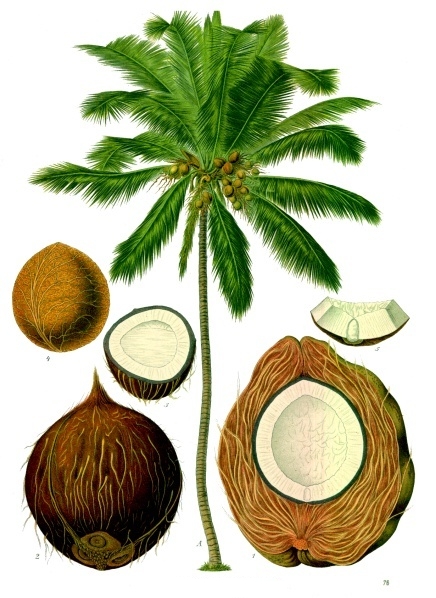# **Coconut Rhinoceros Beetle**
**Aubrey Moore**
Monthly Extension Meeting
College of Natural and Applied Sciences
University of Guam
April 7, 2017
- COLLABORATORS:
**University of Guam:** Roland Quitugua, Ian Iriarte, & many others;
**AgResearch New Zealand:** Sean Marshall, Trevor Jackson;
**Eastern Mennonite University:** Matt Siderhurst, Kat Lehman, Diego Barahona;
**USDA-ARS-PBARC:** Eric Jang, Dom Skabeikis;
**University of Hawaii, Hilo:** Arnold Hara;
**Secretariat of the Pacific Community:** Maclean Vaqalo, Josuah Wainiqolo;
**Guam Department of Agriculture:** Russell Campbell, Patrick Artero;
- FUNDING AGENCIES:
**USDA-APHIS:** Lisa Ishibashi, Dallas Barringer, Ben Quichocho, Troy Brown, Ron Weeks & others;
**USDA Forest Service:** Sheri Smith;
**Guam Legislature**
Note:
Special thanks to Roland Quitugua, Sean Marshall, and Matt Siderhurst.
# Outline
- **CRB Biology and Population Ecology**
- Invasion of Guam
- Eradication Attempt
- IPM Tactics
- Trapping
- Detection of Breeding Sites
- Biological Control
- Current Situation
- Discovery of the CRB-Guam Biotype and its Significance
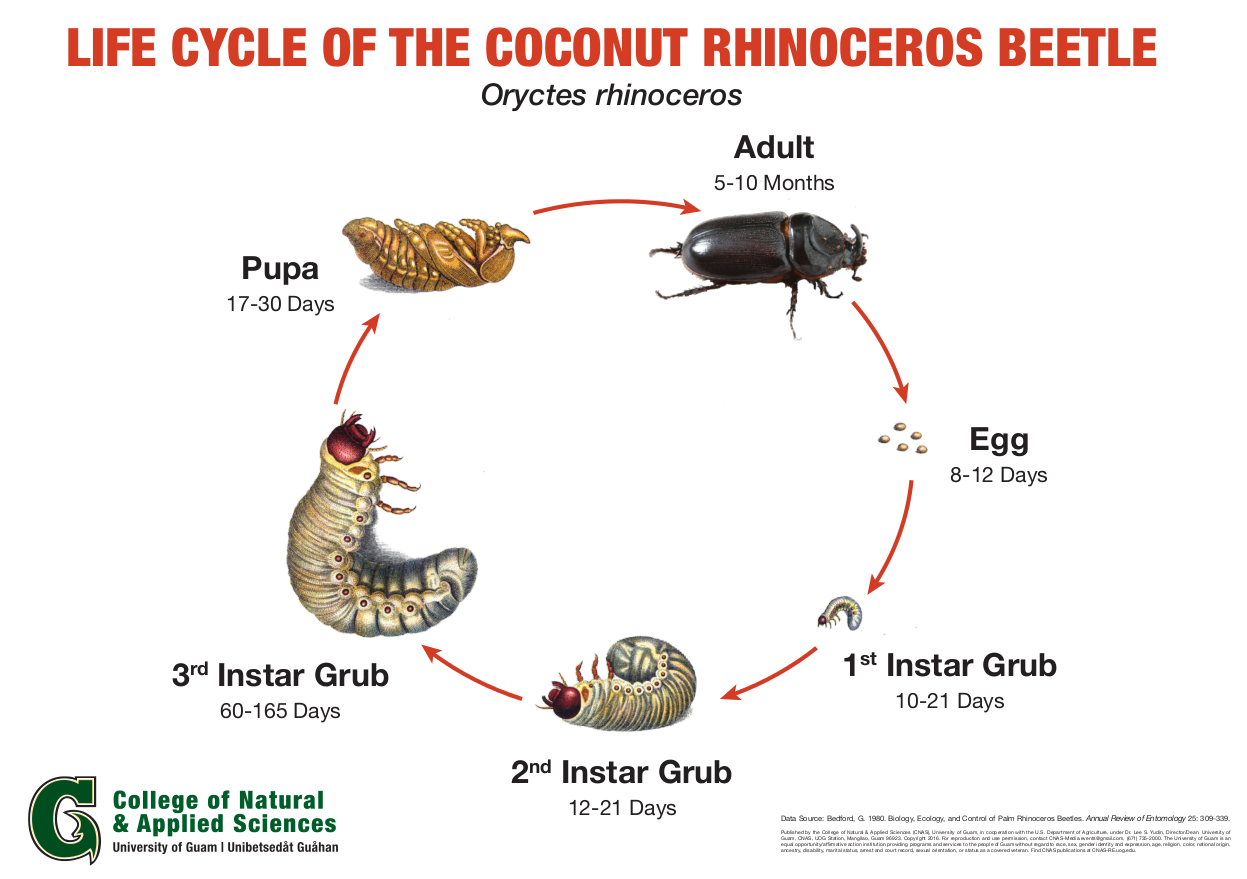
Note:
- Grubs feed on decaying vegetation and do no damage.
- Adults damage and sometimes kill palms when they bore into crowns to feed on sap.
- Females lay about 100 eggs. Potential population growth rate of 5,000% per generation.
Note:
- Greater than 90% of a CRB population will be found in breeding site aggregations
- Favorite habitat for breeding sites is dead standing coconut stems and decaying
coconut logs.
- However, they will thrive in anything high in organic material including
green waste, grass clippings, sawdust piles, and manure.
- In the lab, we rear CRB from egg to adult on a store bought blend of steer
manure and soil.
Note:
- Adults bore into crowns of coconuts or other palms to feed on sap.
- Adults leave the bore hole after 2 or 3 days.
- Adults feed several times.
- Developing fronds are damaged when a beetle bores through them.
- Palms are killed if the meristem is damaged.
- Palms may regrow a full canopy of CRB damage is stoped. However, bore holes
do not heal, leaving palm structurally week and succeptible to beheading
strong winds.
Note:
- Distinctive v-shaped cut are evidence of a CRB feeding even several months prior.
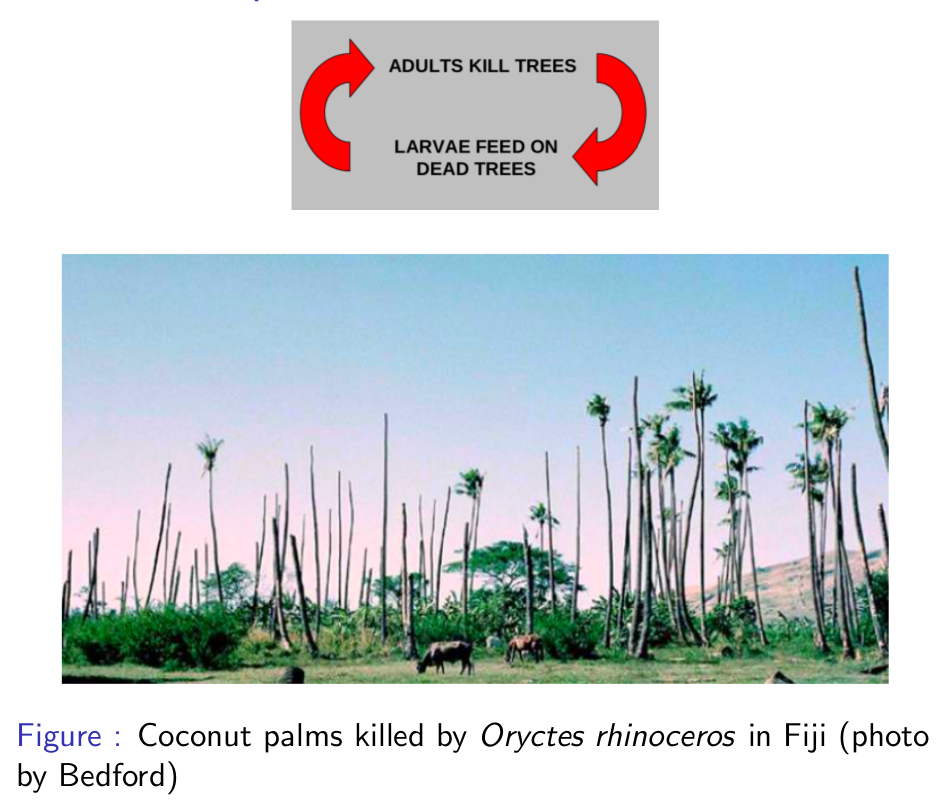
Note:
- A positive feedback cycle may be initiated if the adult CRB population is high enough
to kill large numbers of palms.
- Dead standing trunks become breeding sites
which produce even higher numbers of beetles.
- Feedback cycle may be initiated when abundant breeding sites are created by typhoons,
agricultural clearing, or war.

Note:
- native range is SE Asia
- CRB arrived in the South Pacific with shipments of rubber plants from Ceylon
to Samoa in the early 1900s
- arrived in Palau during WWII
- no range expansion between 1975 and 2007
- only 1 successful eradication out of several attempts
# Outline
- CRB Biology and Population Ecology
- **Invasion of Guam**
- **Eradication Attempt**
- IPM Tactics
- Trapping
- Detection of Breeding Sites
- Biological Control
- Current Situation
- Discovery of the CRB-Guam Biotype and its Significance
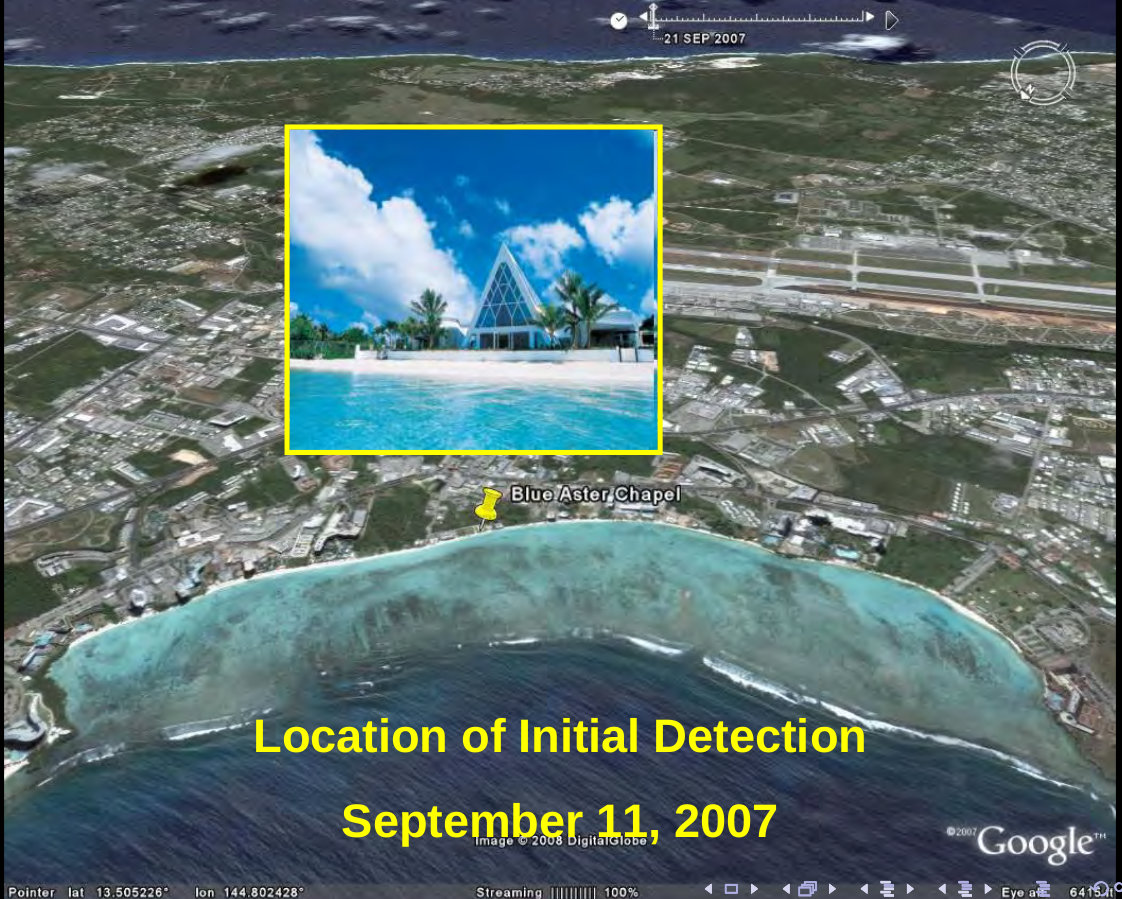
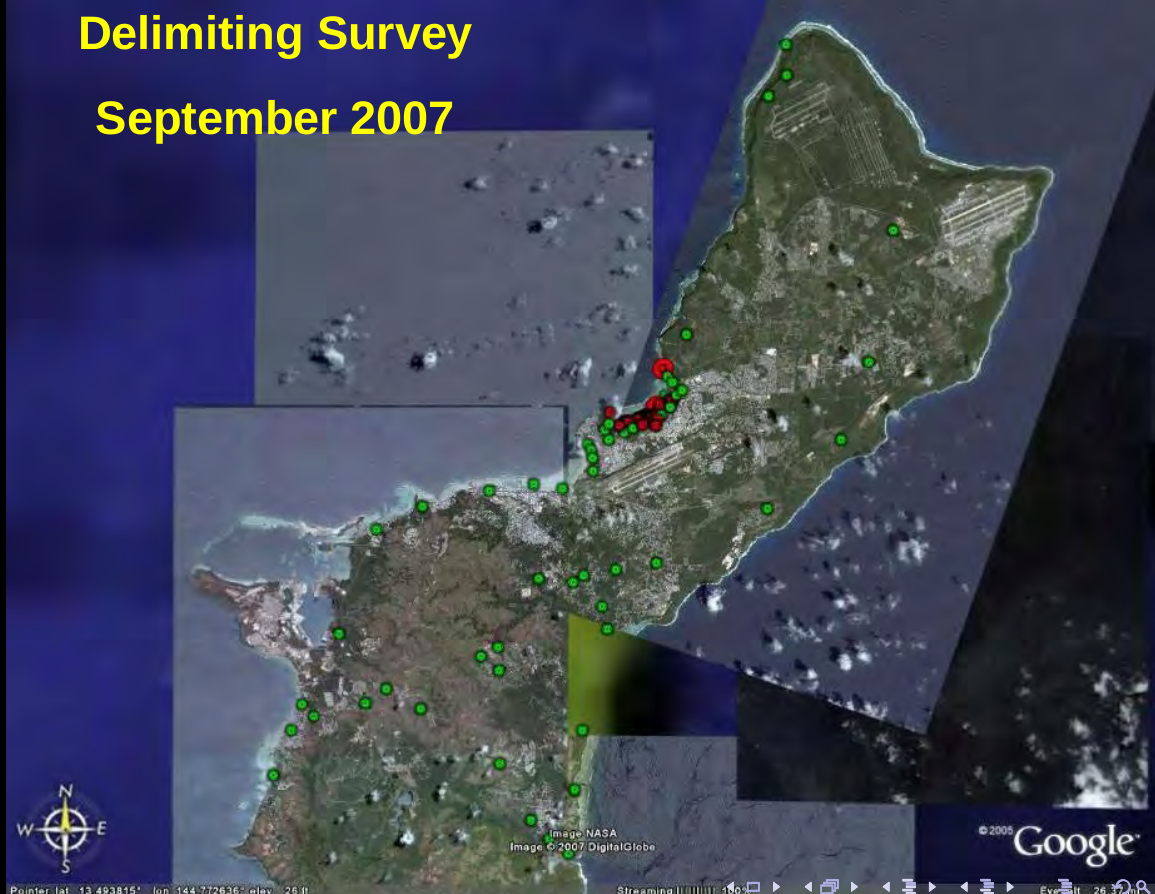
Note:
- A decision to attempt eradication was based upon delimiting survey results
indicating that CRB occupied only a relatively small area.
# Guam CRB Eradication Project Tactics
- mass trapping: FAILED
- sanitation: SUCCEEDED
- quarantine: FAILED
Note:
- mass trapping: new damage to palms observed in mass trapping areas
- sanitation: damage reduction observed in sanitized area
- quarantine: CRB transported to greeenwaste dump sites and plant nurseries
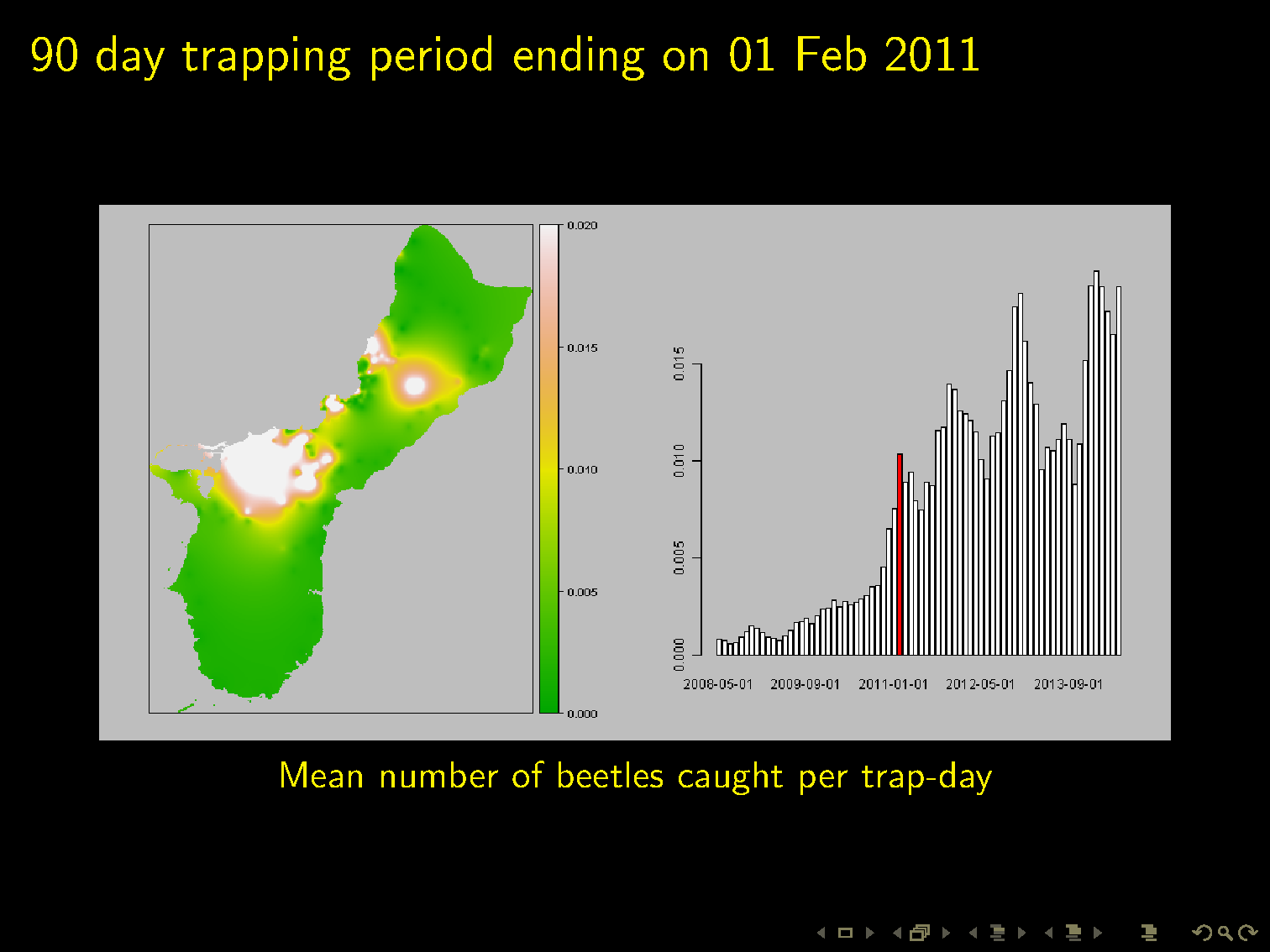
Note:
- By Feb 2011, CRB had escaped from Tumon to other parts of Guam
- Control efforts transitioned from eradication to development and implementation of
integrated pest management
- Implementation of biocontrol became a priority
# Outline
- CRB Biology and Population Ecology
- **Invasion of Guam**
- Eradication Attempt
- **IPM Tactics**
- **Trapping**
- Detection of Breeding Sites
- Biological Control
- Current Situation
- Discovery of the CRB-Guam Biotype and its Significance
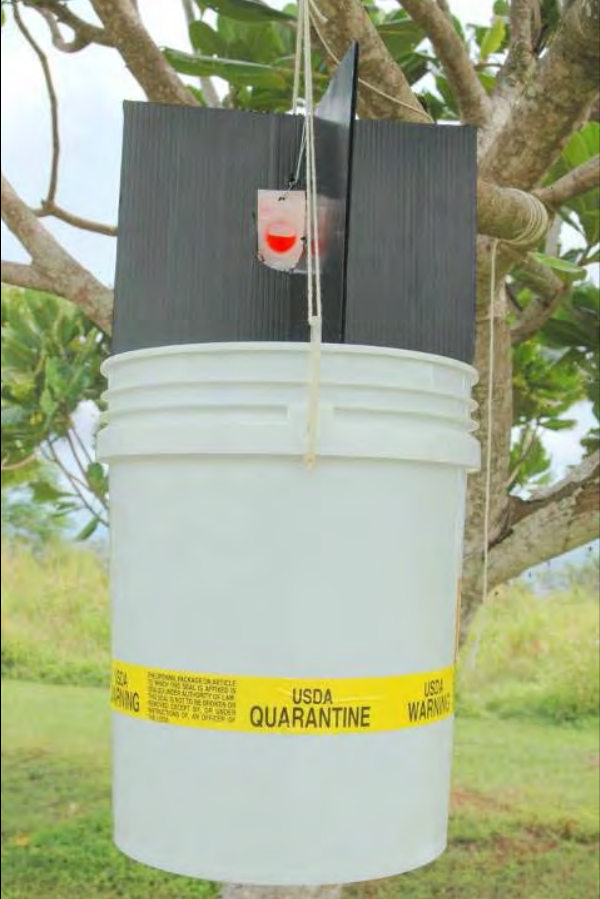
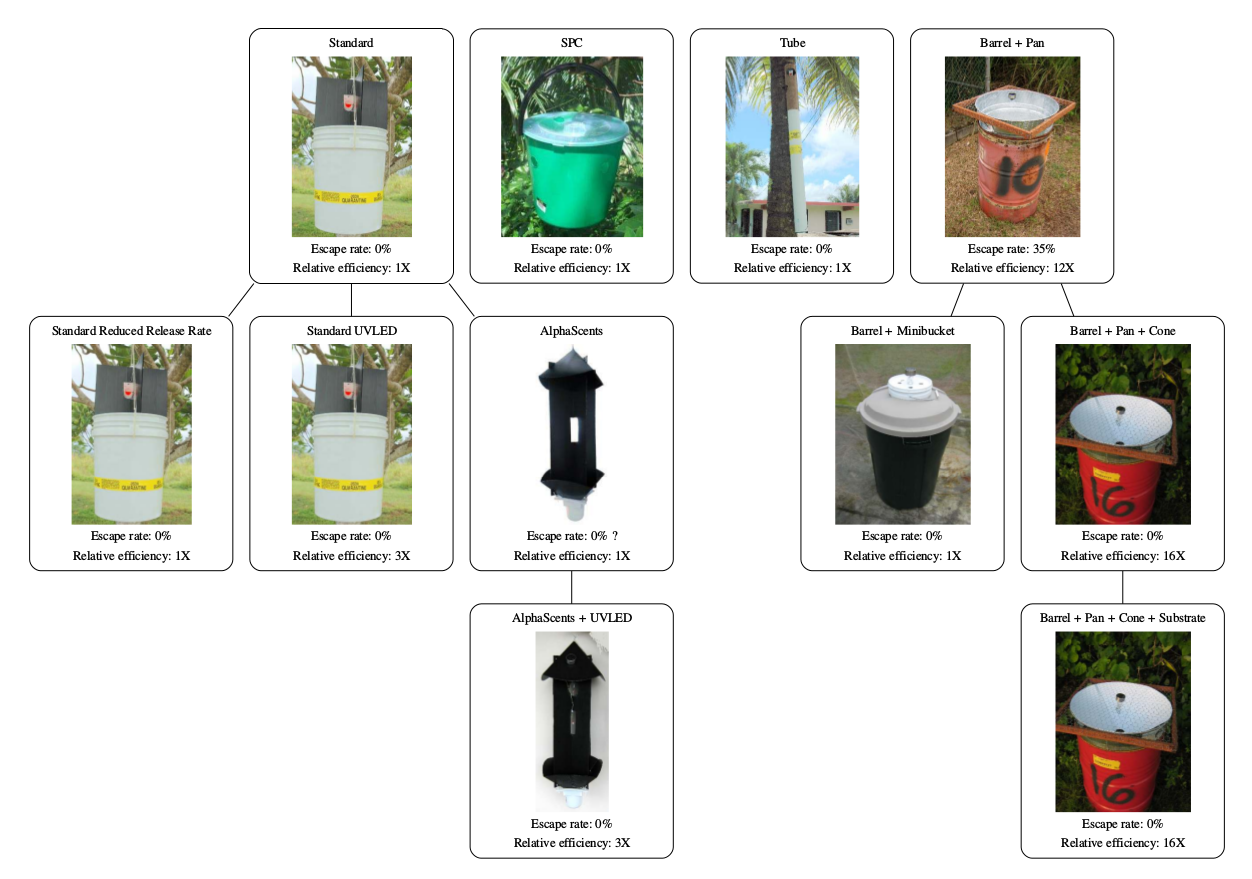
# Solar UV LED
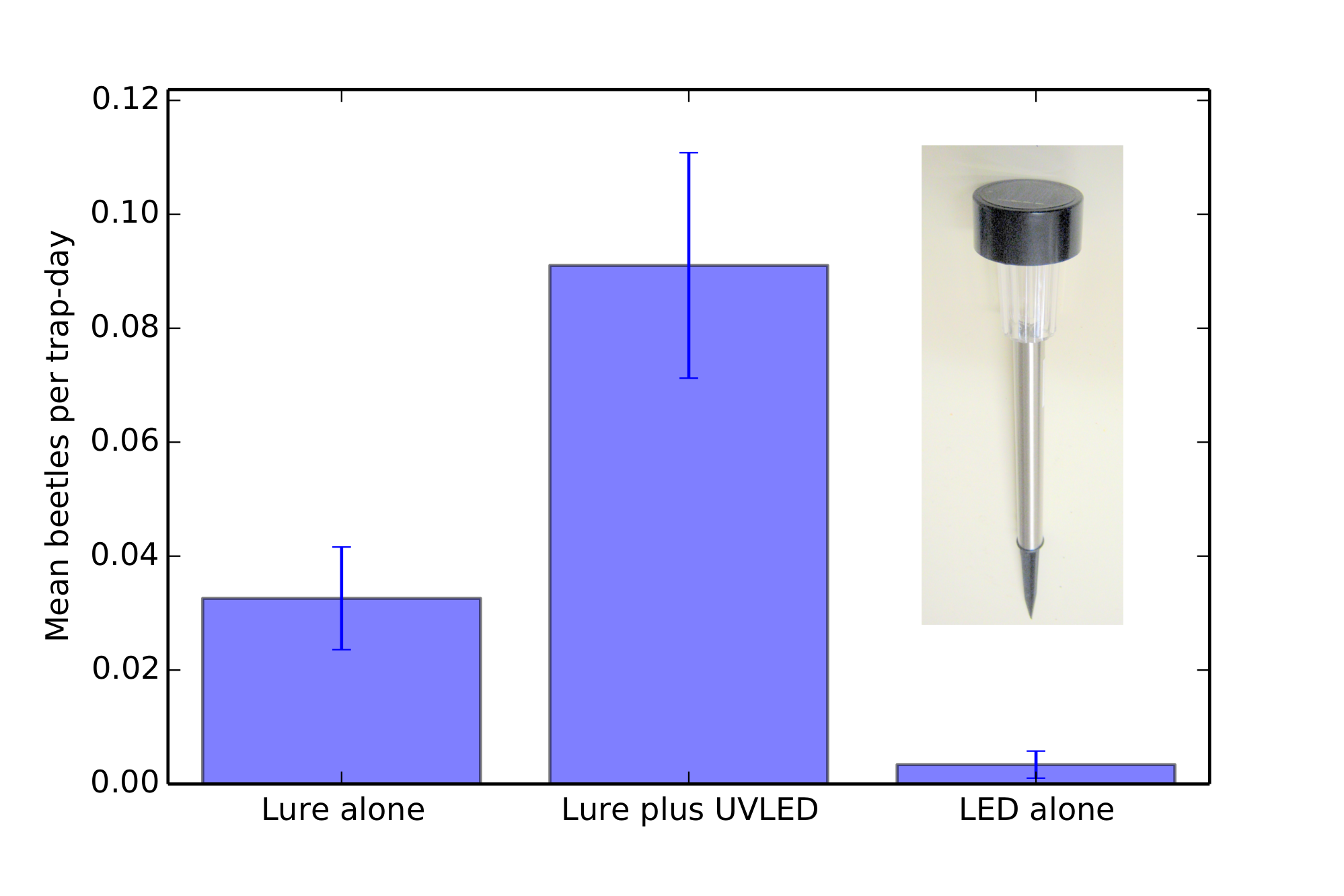
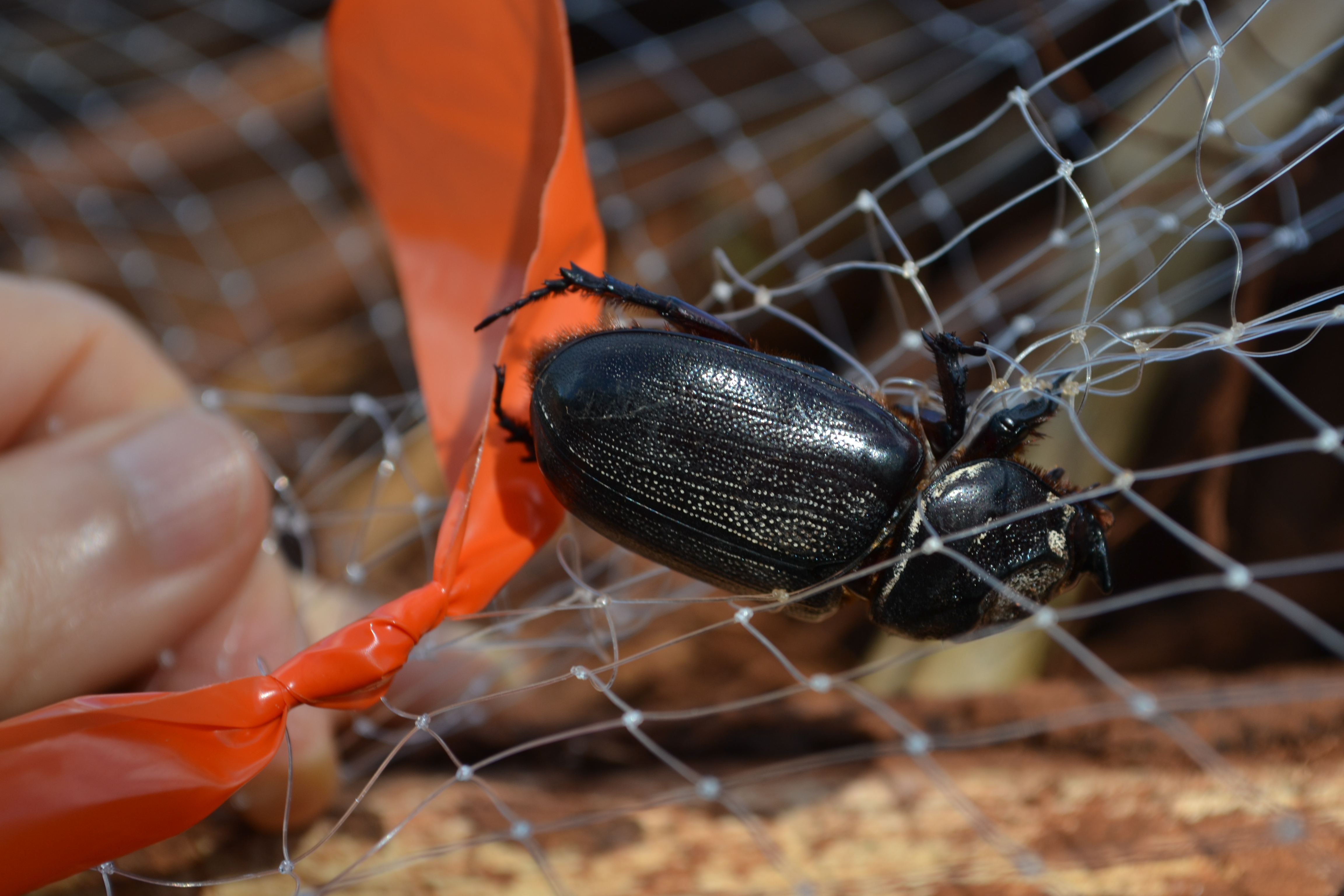
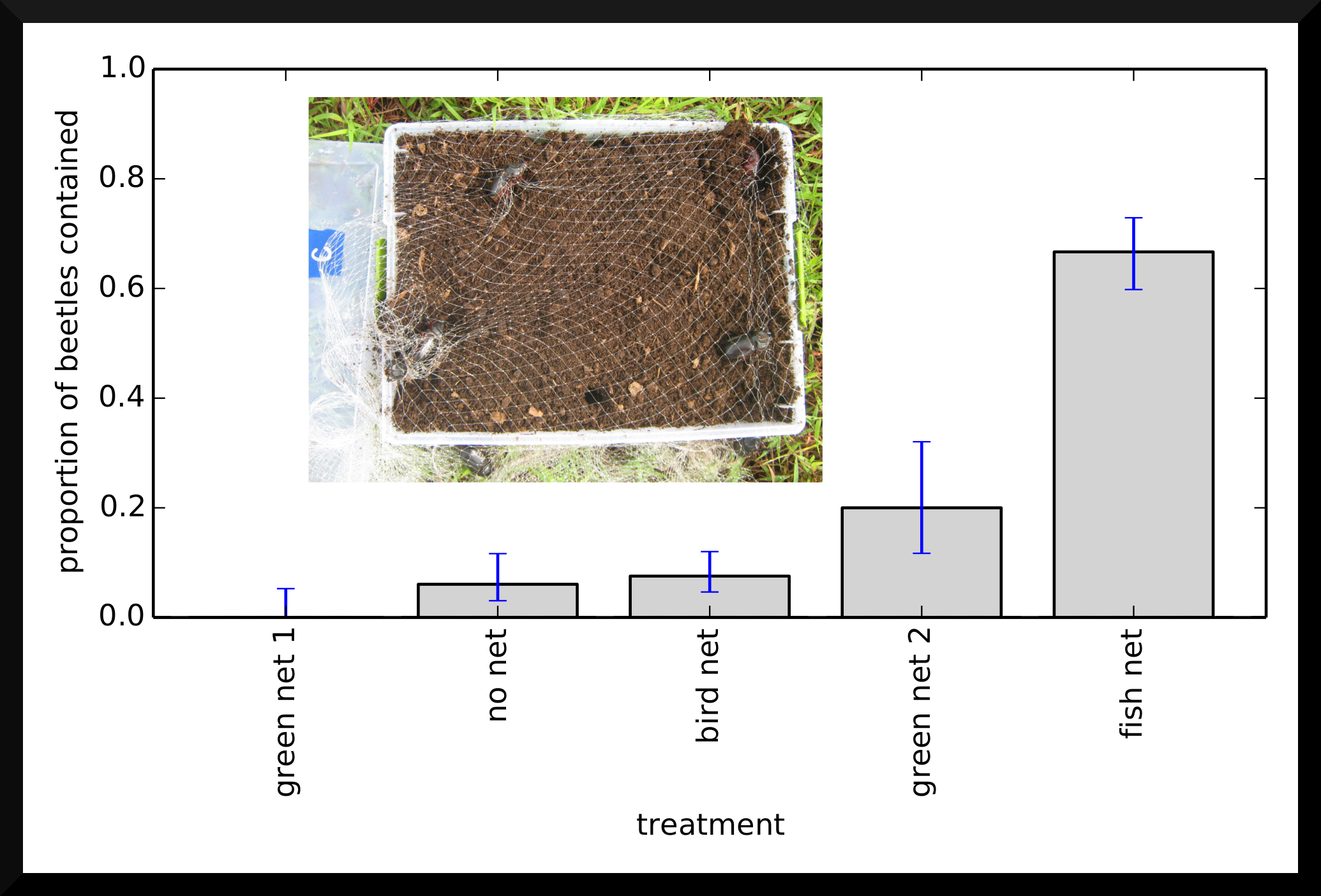
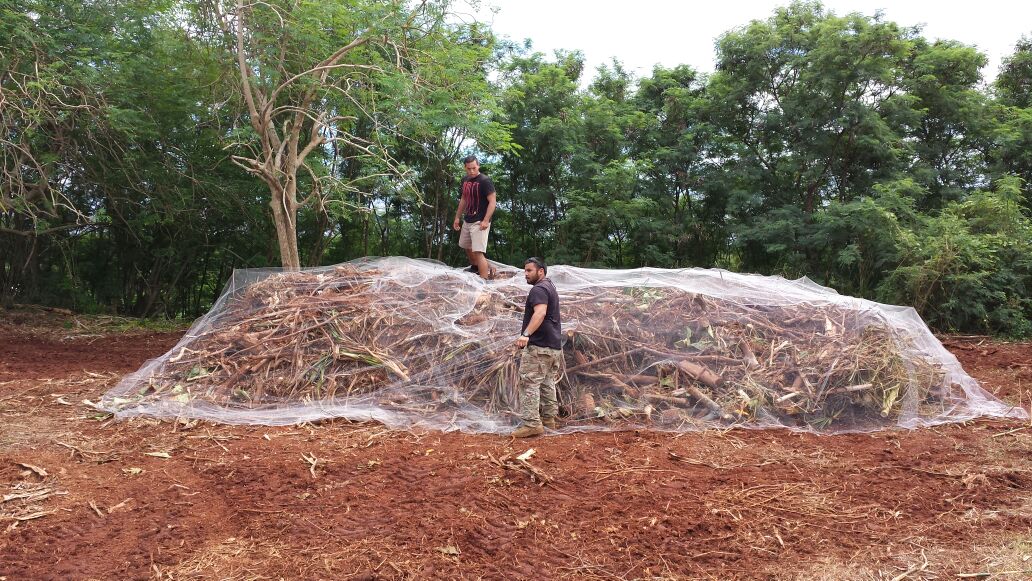
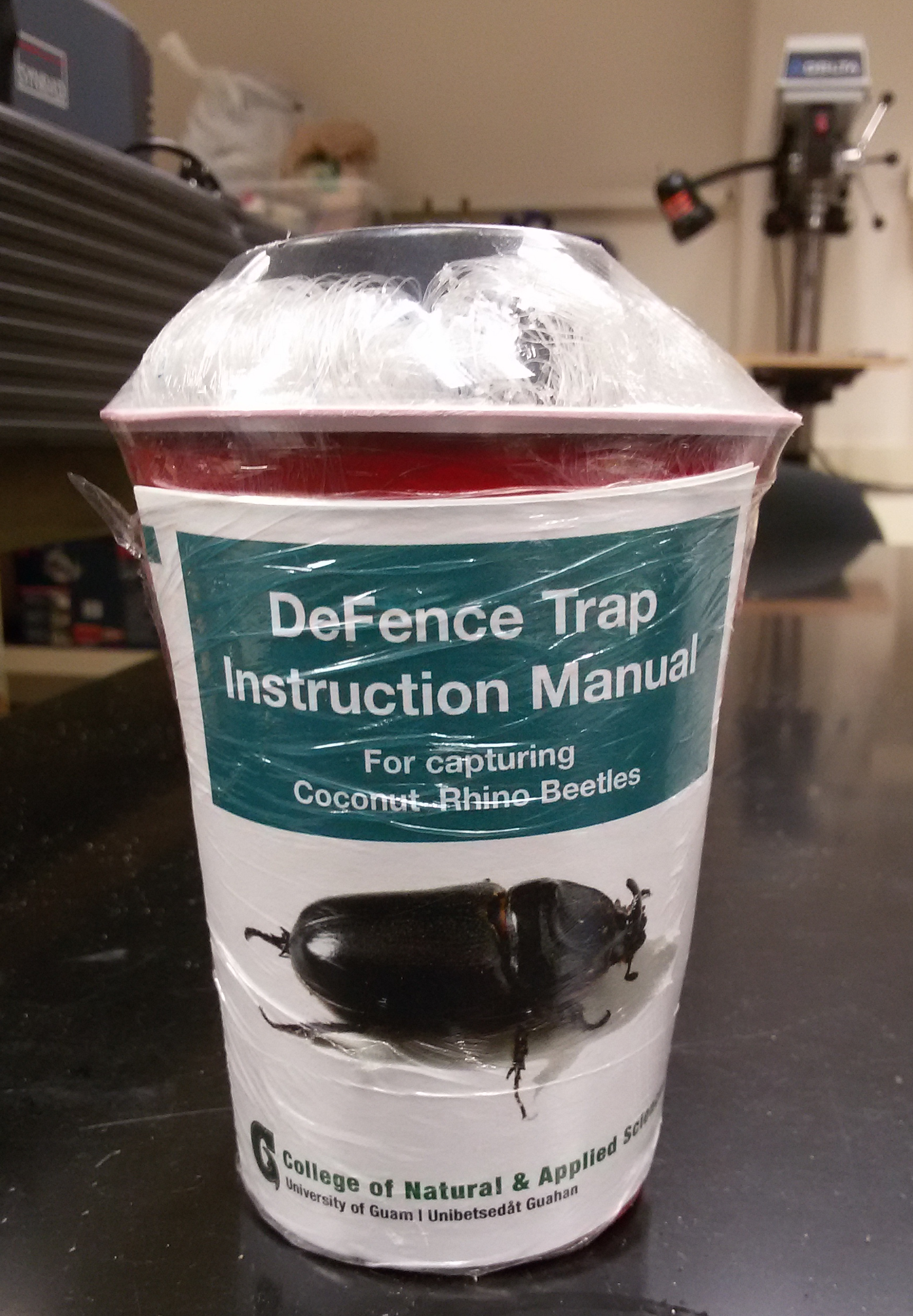
# Outline
- CRB Biology and Population Ecology
- **Invasion of Guam**
- Eradication Attempt
- **IPM Tactics**
- Trapping
- **Detection of Breeding Sites**
- Biological Control
- Current Situation
- Discovery of the CRB-Guam Biotype and its Significance

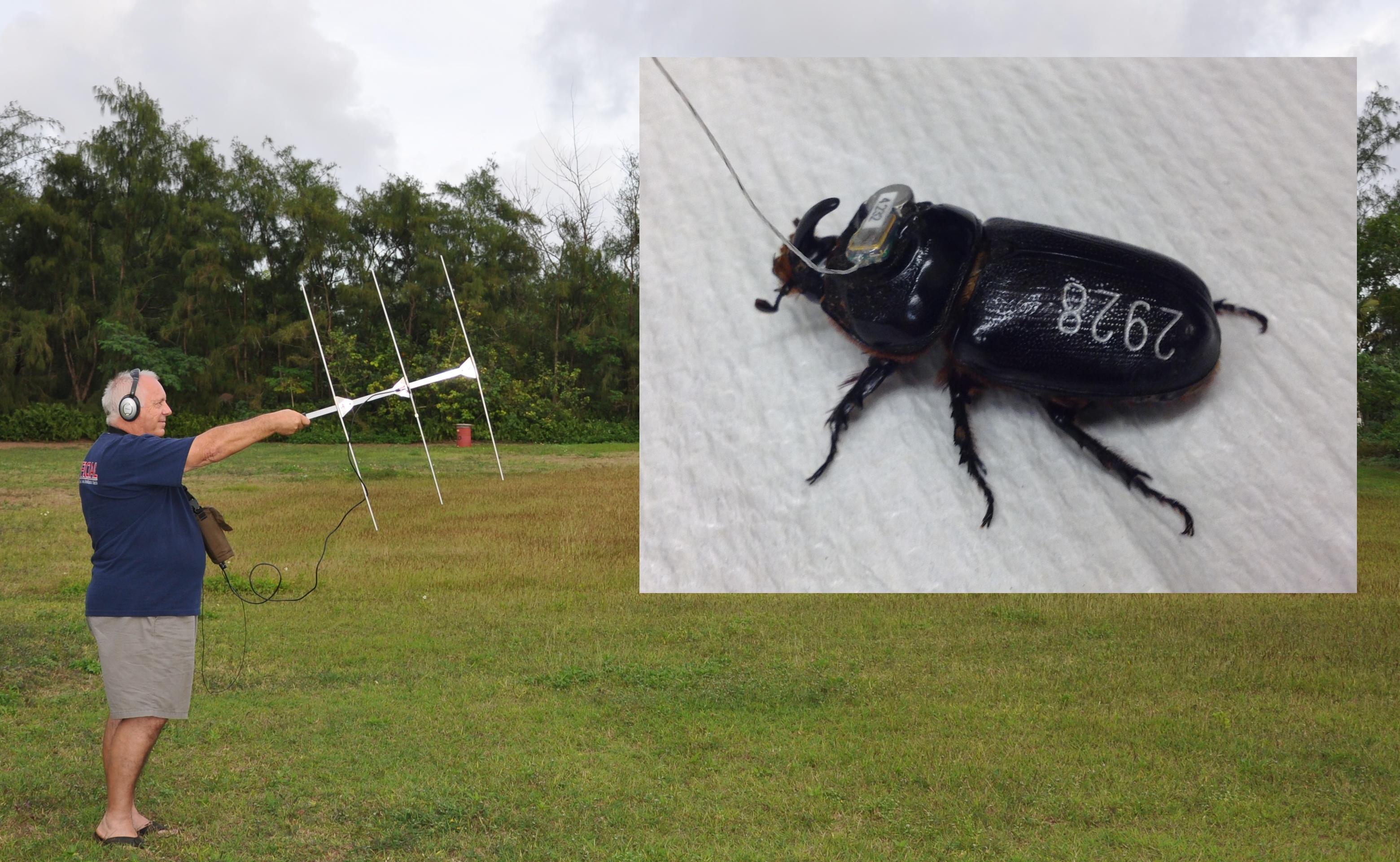
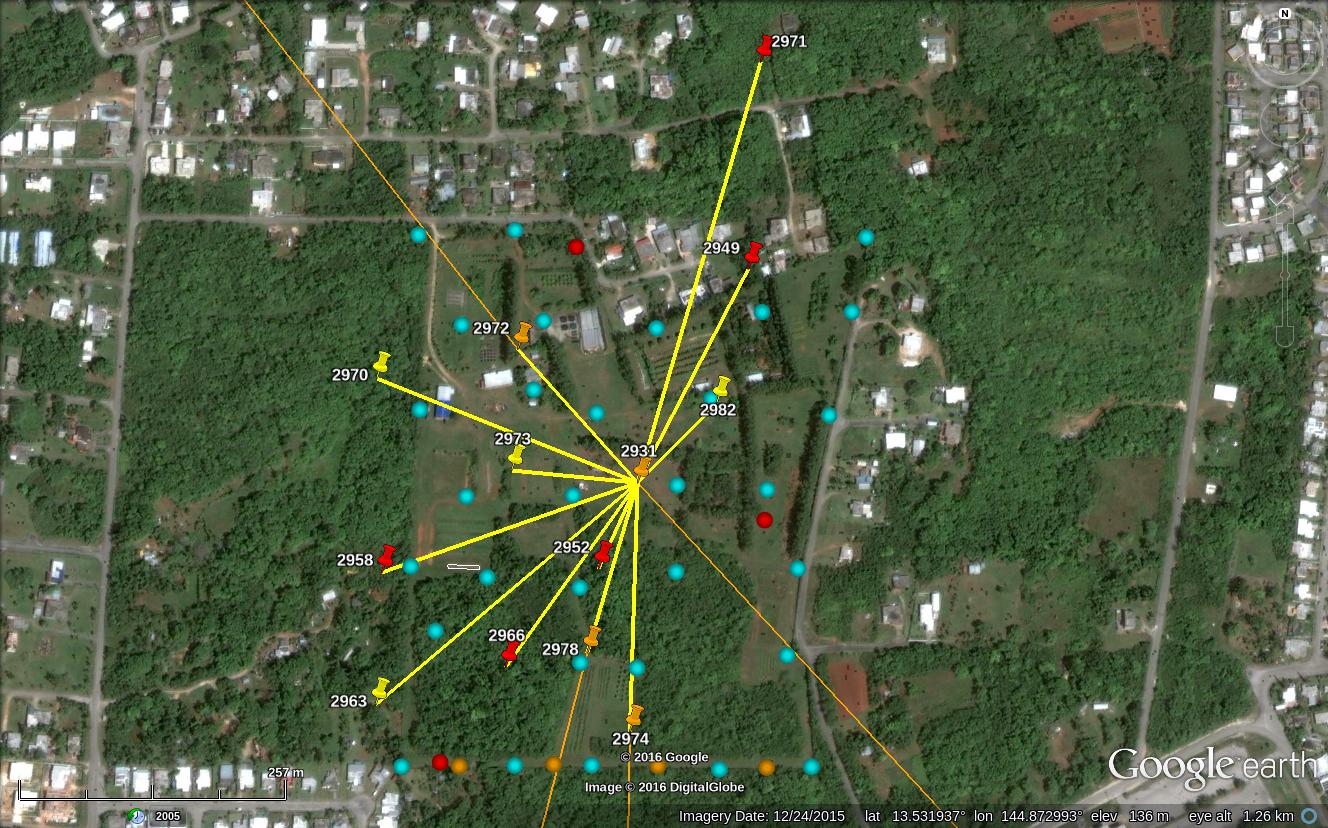
# Outline
- CRB Biology and Population Ecology
- **Invasion of Guam**
- Eradication Attempt
- **IPM Tactics**
- Trapping
- Detection of Breeding Sites
- **Biological Control**
- Current Situation
- Discovery of the CRB-Guam Biotype and its Significance
# Biological Control for CRB
- Oryctes nudivirus (OrNV)
- Typically results in 90% damage reduction within a few months
- Density-dependent control lasts indefinitely
- **Failed for the first time on Guam**
- *Metarhizium majus*, Green muscardine fungus (GMF)
- Successfully introduced from the Philippines
- Surveys indicate that mortality from GMF is about 20%
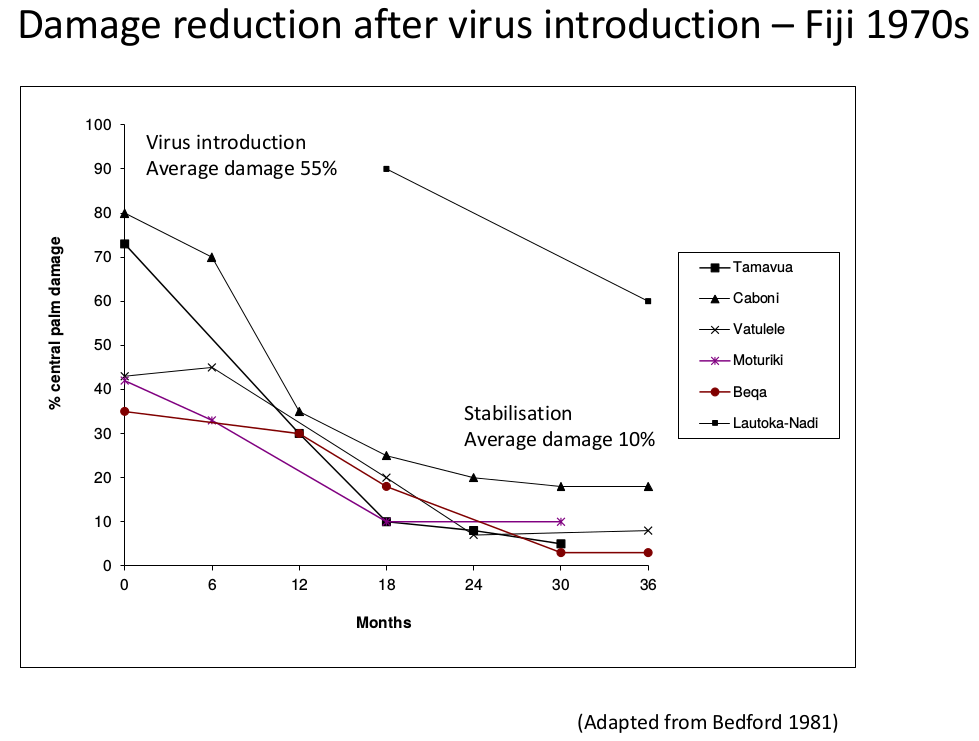
# Outline
- CRB Biology and Population Ecology
- **Invasion of Guam**
- Eradication Attempt
- IPM Tactics
- Trapping
- Detection of Breeding Sites
- Biological Control
- **Current Situation**
- Discovery of the CRB-Guam Biotype and its Significance
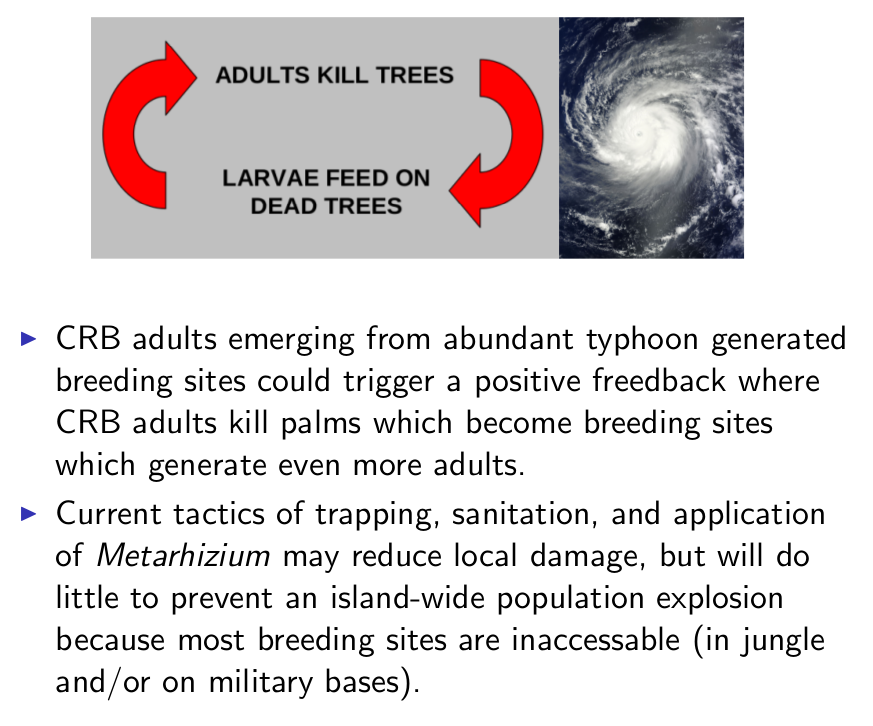
# Outline
- CRB Biology and Population Ecology
- Invasion of Guam
- Eradication Attempt
- IPM Tactics
- Trapping
- Detection of Breeding Sites
- Biological Control
- Current Situation
- **Discovery of the CRB-Guam Biotype and its Significance**
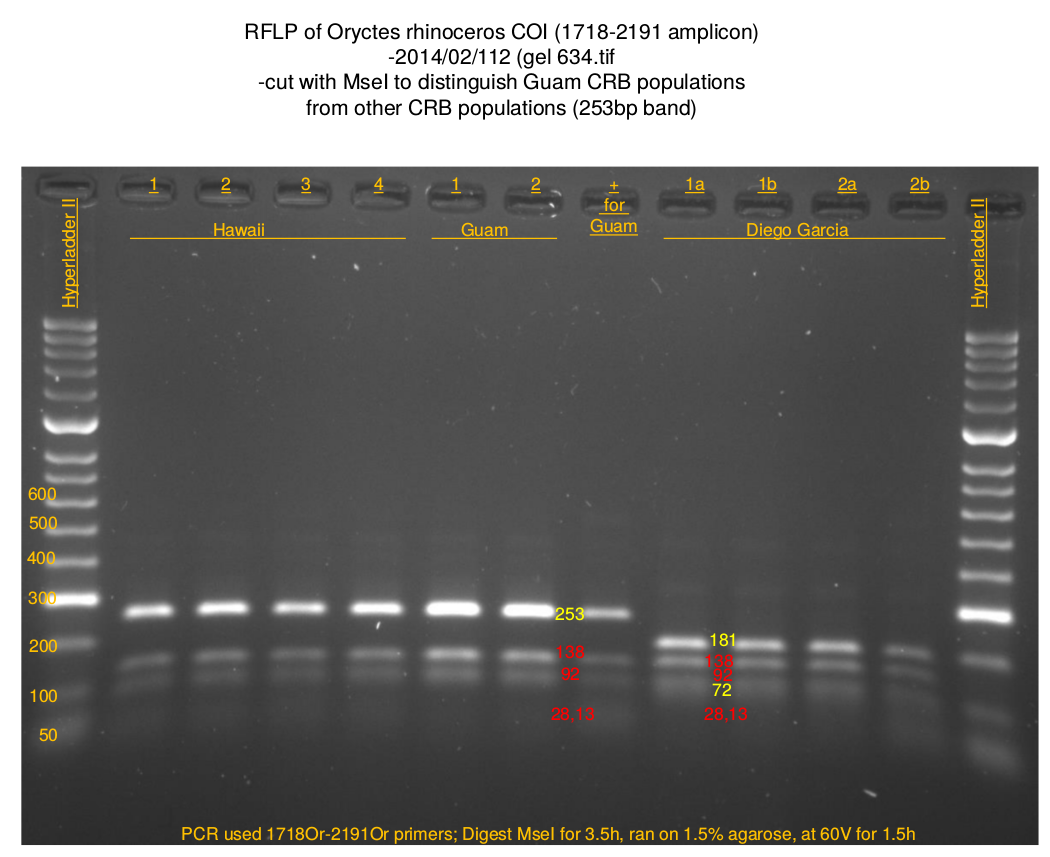
Source: [Marshall S, Moore A. 2014. DNA analysis of Hawaii CRB.](http://guaminsects.net/anr/content/dna-analysis-hawaii-crb)
Note:
- Original intent of DNA analysis was to determine potential origins for the Guam CRB invasion
- Prior to 2013, we had no matches
- DNA from the first 4 beetles captured in Hawaii matched
- DNA from new invasion in Port Morseby (Papua New Guinea) and Solomon Islands match
- Palau and Port Morseby have mixed populations
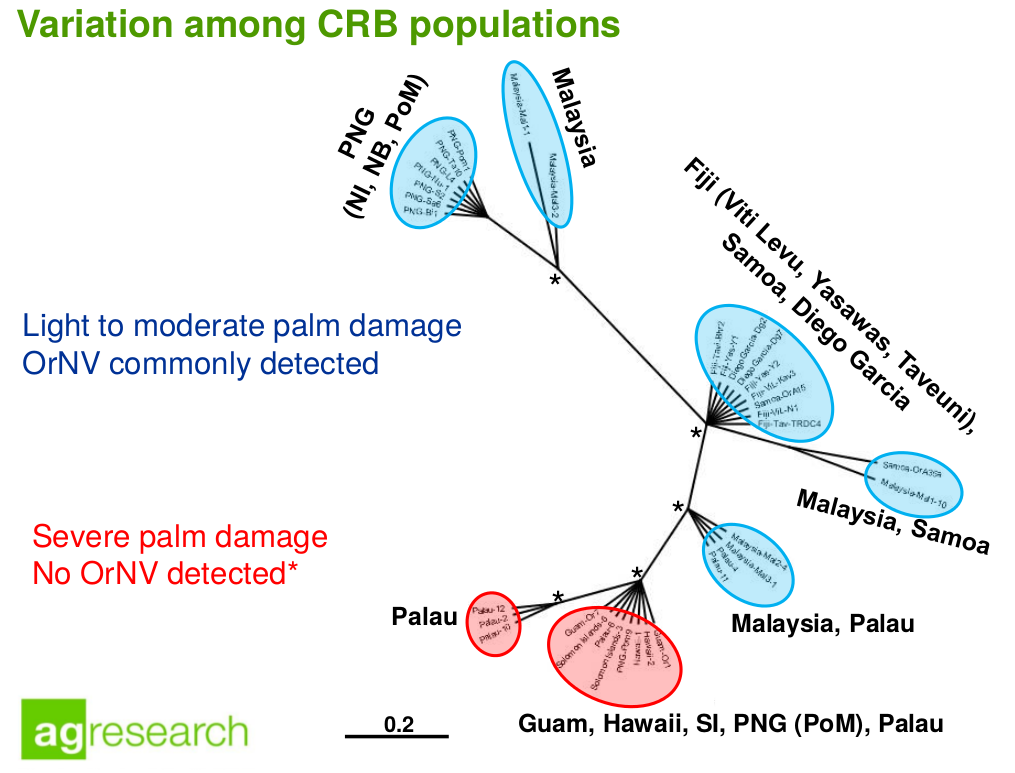
Note:
- OrNV has not been deected in the CRB Guam biotype
- Infection rates in other genotypes run as high as 80%

Note:
- Following 30 years without range expansion, CRB has recently invaded Guam, Oahu (Hawaii), Guadalcanal (Solomon Islands), and Port Morseby (PNG)
- All recent invasions involve CRB-Guam
- Palau has a mixed population; damage increasing
# CRB Attacking Guam is a Novel Biotype (CRB-Guam)
- genetically different
- resistant to all available isolates of OrNV
- more invasive (all 4 new invasions since 2007 involve CRB-G)
- behavioral differences ???
- not highly attracted to oryctalure
- arboreal breeding sites
- higher per-capita damage
#Discovery of the CRB-Guam Biotype
- Marshall, Sean, Maclean Vaqalo, Aubrey Moore, Roland Quitugua, and Trevor Jackson (2015).
**A new invasive biotype of the coconut rhinoceros beetle (Oryctes rhinoceros) has
escaped from biological control by Oryctes rhinoceros nudivirus.** Presented at
the International Congress on Invertebrate Pathology and Microbial Control and
the 48th Annual Meeting of the Society for Invertebrate Pathology, Vancouver,
BC, August 2015. Available on-line at
http://www.sipmeeting.org/van1/SIP2015-Full%20Program.pdf
Note:
This OrNV resistant biotype has the potential to invade all cocconut growing areas,
including new islands and counties in SE Asia where CRB is naturally controlled by
OrNV. Efects on coconut and oil palm crops could be disasterous.
#Discovery of the CRB-Guam Biotype
- Jackson, Trevor (2015). **Need for emergency response for a new variant of rhinoceros beetle (Guam
biotype).** International Association for the Plant Protection Sciences
Newsletter (XI). November, 2015. Available on-line at
https://www.plantprotection.org/portals/0/documents/newsletters/2015/iapps%2011-2015.pdf
Note:
An emergency response to CRB-G is needed to minimize damage on newly invaded islands, thereby
reducing risk of further spread.
#Discovery of the CRB-Guam Biotype
- Vaqalo, Maclean, Sean Marshall, Trevor Jackson, Aubrey Moore (2015).
**An Emerging Biotype of the Coconut Rhinoceros Beetle Discovered in the Pacific.**
Secretariat of the Pacific Community, Land Resources Division. Available on-line at
http://www.spc.int/lrd/plant-health-publications/doc_download/2374-ph-agalertno51.
Note:
Fact sheet for the 21 Pacific Island Countries and Terriories hich are members of SPC.
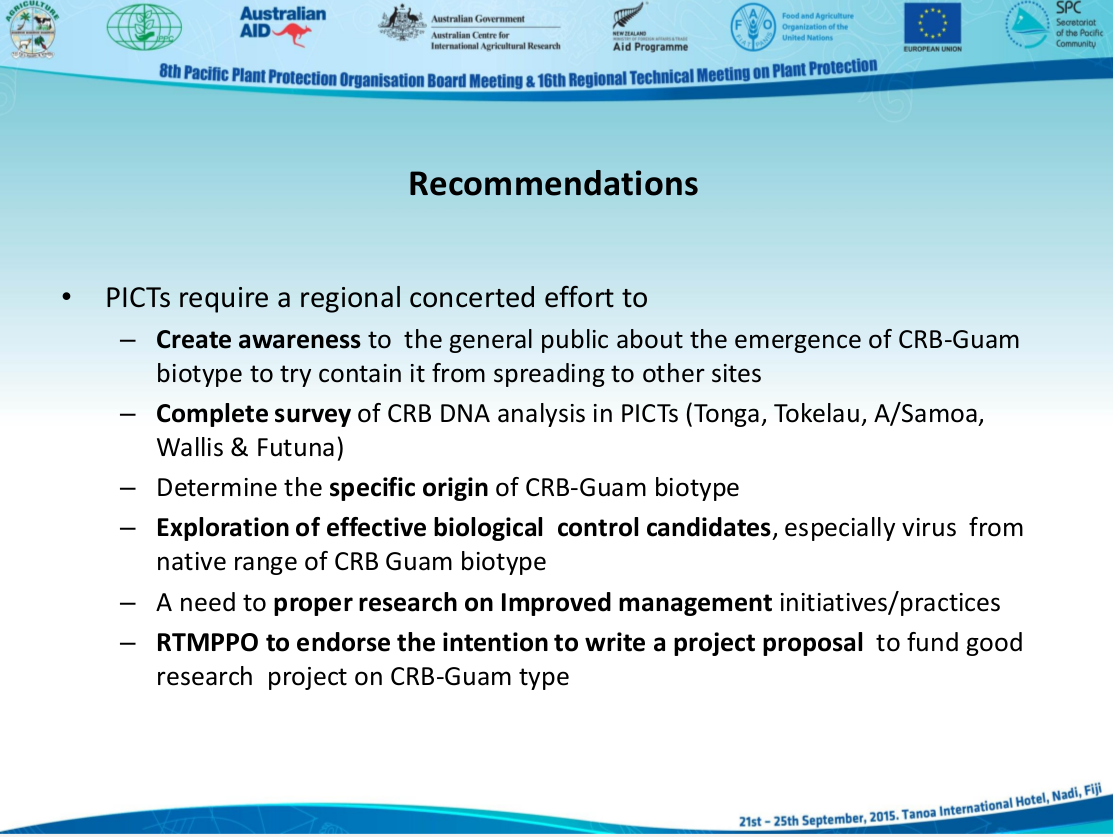
Note:
Recomendations adopted by the PPPO following presentations by Trvo Jackson,
Maclean Vaquala and Aubrey Moore at their meeing in Fiji, Sepember 2015.
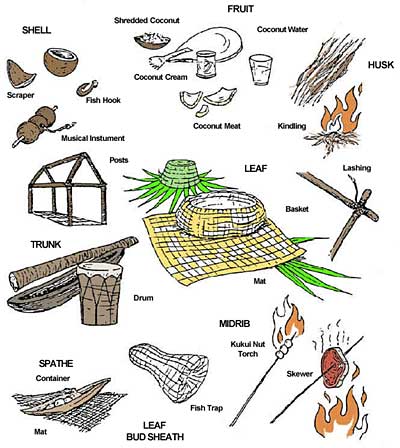
Note:
Invasion of islands where coconut is still the "tree of life" will be disasterous.
